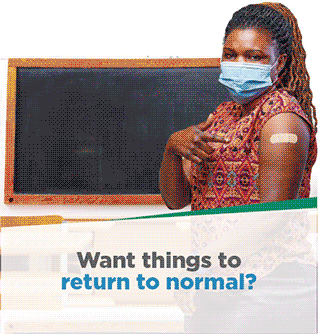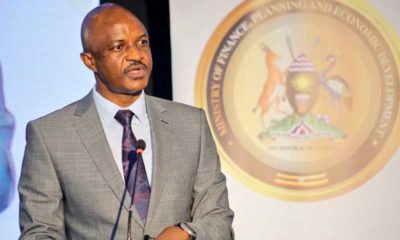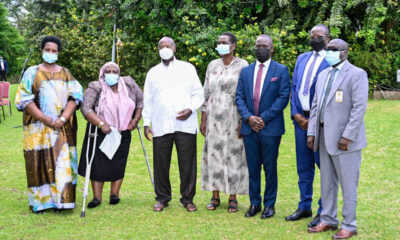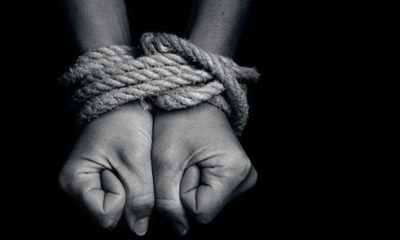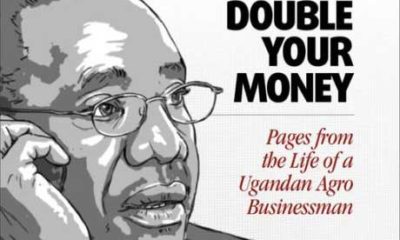human traffickingFeatures
Gen. Aronda Nyakairima 1959-2015; A patriot and servant to the nation
Gen. Robert Aronda Nyakairima was born on July 7, 1959 at Kitojo village in Rukungiri district to Mr and Mrs Yeremiya Nyakairima. He attended Kitgum high school in northern Uganda.
His school life outside his birth place, but also a broader perspective on virtues of humility, respect, tolerance and co-existence that defined his conduct and indeed his cause for success in later years as he was juggled different tasks both in the military as well as in the civilian political environments.
Gen. Aronda, who died on Saturday aboard a flight from South Korea to Dubai on his way to Uganda, joined Makerere University in 1978, and graduated in 1981 with a Bachelor of Arts degree in political science. From Makerere, he immediately joined the then NRA rebels along with a group of graduates that included people like Maj. Gen. Benon Biraaro.
Aronda attended the basic officers course in 1989, along with people like Col. Kizza Besigye, who describes his respect for others, calmness under pressure as well as his steely determination as golden pillars that defined his success.
As Besigye noted in a eulogy for Aronda: “I trained with Gen Aronda, when we did our Officers’ Basic Course (OBC) in Bombo. The six-month course, under Tanzanian (TPDF) instructors, was even much tougher than our bush training. Once again, Gen Aronda withstood the tough conditions and performed very well.”
Aronda worked as an intelligence officer in the Ugandan military before he was appointed assistant director in the Directorate of Military Intelligence in the UPDF. He was moved to the Presidential Protection Unit as an intelligence officer.
In 1993, Aronda went to the United States military college at Fort Leavenworth where he studied strategic studies. Not only did he excel at Fort Leavenworth, he excelled on the front line as well as in leadership in the UPDF when he came back.
Aronda’s excellence was later to be recognised by the American college in October 2010, where he, along with General Eui Don Wang of South Korea, and Major General Richard Rhys Jones of New Zealand, were inducted into the International Hall of Fame at the Lewis and Clark Centre at Fort Leavenworth for attaining the highest position in the military of their countries.
From Leavenworth, Aronda took on and diligently executed very serious assignments, including as Commander of the Armoured Brigade in Masaka.
Success on the Front-line
In 2003, Aronda was named the sixth Army Commander of the Uganda People’s Defence Forces (UPDF) since NRM came to power in 1986, replacing Gen, James Kazini. Aronda’s appointment came at a critical moment when the UPDF was almost losing the war against the Lord’s Resistance Army rebels of bandit Joseph Kony.
President Museveni and his commanders had dramatically failed to meet their own-set deadlines for defeating Kony, thanks in great part to lack of morale among soldiers, ill-equipment and poor civilian-military relations.
Aronda’s ascent to the top job in the army was to change that as the UPDF got modern war artillery, increased the number of uniforms for soldiers from two to four every year. A new campaign against Kony was launched code-named Operation Iron Fist that finally drove LRA out of northern Uganda to South Sudan.
Aronda’s very personal involvement in procuring the military hardware as well as using the machines on the ground was decisive in battle against Kony. Aronda was instrumental in the decisive battle that brought a combined force of air power and infantry that drove LRA rebels out of Northern Uganda.
After defeating Kony, Aronda shifted his focus to improving the lives of ordinary soldiers. He started by improving both administrative as well as living houses of soldiers in Barackses around the country under a campaign aimed at bringing an end to Mama Yingiya Pole or Unipots.
Among the Barackses that got a face lift included Bombo military baracks, Mubende, Kakiri, and Kalama.
Aronda believed in training and professionalism of the army, as a necessary first step in building a modern and viable army. As a result he advocated for more regular training courses which helped to equip and transform Kimaka training school into a Senior Command Staff College.
Along the same lines, Aronda strongly advocated for the purchase of former Lugazi University from Prof. George Kiirya by the UPDF. The expansive place was later converted into an Engineering School that enhanced the UPDF’s capacity to build structures such as the present Pavilion at the Kololo airstrip.
In his effort to improve the life and welfare of soldiers, Aronda masterminded the creation of Wazalendo Sacco, a Savings and Credit Cooperative Society for soldiers in 2005.
Starting with an initial savings of 238 million, Wazalendo grew to become Uganda’s biggest SACCO with total assets valued at Ushs 109 billion in 2014.
The SACCO gives out loans to members which helps them meet otherwise tougher tasks such as paying school fees for their children or putting up houses for their families.
National ID
When he was appointed the Minister of Internal Affairs in 2013 before retiring from the military, a lot of people raised concerns about militarisation of Uganda’s politics. His excellent service in public service that saw increased efficiency and dramatic reduction in corruption especially at the Pass ports office, forced many people to change their minds about military men serving in civilian offices.
His runaway success in the resurrection and successful implementation of the National Identity card project won the praise of even his biggest sceptics.
Paul Bukenya, the Electoral Commission’s Deputy Spokesperson worked with the late Gen. Aronda for 18 months as assistant spokesperson in the National ID system. Bukenya remembers Aronda as a very dynamic, focused and strict leader who was determined to achieve a specific target in a specific time frame.
Bukenya says: “General Aronda was a very dynamic leader. He quickly understood the multi-sectoral approach of the various departments that came together to implement the National ID project. He provided effective leadership and was very passionate about work. This meant that every member of the team had to stick to a strict time table which enabled us to deliver the ID on time. The results are all clear for everyone to see. Every Ugandan now has an ID.”
Aronda was a strict disciplinarian and wasted no time with those that veered off the ethical path.
Bukenya notes: “Of course there was zero tolerance for unethical conduct. Some people fell on the way side of ethical conduct and were forced to leave.”
‘Achieving a goal at the end of the day was always his major focus.’ Bukenya concludes.
Comments














